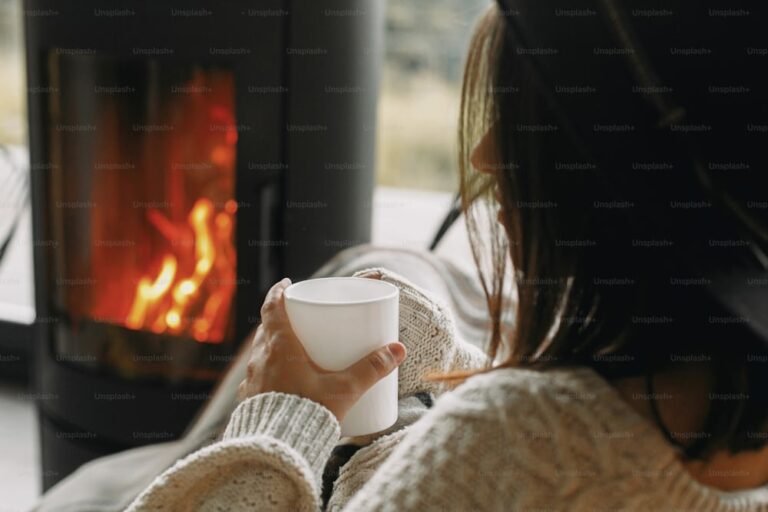As the leaves fall and temperatures drop, it’s essential to prepare your home for the cold months ahead. Winterizing your home ensures you stay warm, save on energy costs, and prevent any cold-weather damage. Here are some essential tips to help you winterize your home and create a cozy retreat for the winter season.
1. Insulate Your Home
One of the most effective ways to keep your home warm is proper insulation. Start by checking your attic, walls, and basement for adequate insulation. Adding extra insulation to your attic can significantly reduce heat loss, keeping your home warmer. Also, consider insulating your pipes to prevent them from freezing and bursting.
2. Seal Windows and Doors
Drafty windows and doors can let cold air into your home, making your heating system work harder. Check for gaps and cracks around windows and doors and seal them with weatherstripping or caulking. Installing draft stoppers at the base of doors can also help keep the cold air out.
3. Service Your Heating System
Before the cold weather arrives, arrange for a professional to inspect your heating system. Regular maintenance ensures your furnace or boiler operates efficiently, helping you save on energy bills. Additionally, replace the filters monthly during the winter to keep your heating system running smoothly. If you live in the West Valley, consider replacing your water heater to ensure it functions properly throughout the cold season.
4. Upgrade to a Programmable Thermostat
A programmable thermostat allows you to set different temperatures for various times of the day, helping you save on heating costs. You can lower the temperature while you’re asleep or away and have it warm up before you wake up or return home. Some smart thermostats even learn your schedule and adjust the temperature automatically.
5. Reverse Ceiling Fans
Ceiling fans aren’t just for summer. By reversing the direction of your ceiling fans clockwise, you can push warm air down from the ceiling and distribute it throughout the room. This simple adjustment can make a noticeable difference in keeping your home warmer.
6. Check and Clean Your Chimney
If you have a fireplace, make sure your chimney is clean and free of obstructions. A blocked chimney can cause dangerous carbon monoxide buildup in your home. Hire a professional chimney sweep to clean and inspect your chimney before using your fireplace. Also, consider installing glass doors to prevent heat loss when the fireplace is not in use.
7. Protect Your Pipes
Frozen pipes can cause significant damage and costly repairs. To prevent pipes from freezing, insulate them with foam pipe insulation, especially those in unheated areas like basements and crawl spaces. Let faucets drip slightly during extremely cold weather to keep water flowing and reduce the risk of freezing.
8. Winterize Outdoor Faucets and Sprinklers
Don’t forget to winterize your outdoor faucets and sprinkler systems. Disconnect hoses, drain outdoor faucets, and shut off the water supply to prevent pipes from freezing. If you have an irrigation system, blow out the water to avoid damage.
9. Stock Up on Winter Supplies
Prepare for winter storms by stocking up on essential supplies. Keep a supply of rock salt or sand for icy walkways, and make sure your snow shovel or snow blower is in good working condition. Have a stash of non-perishable food, bottled water, and batteries in case of power outages.
10. Add Cozy Touches
Creating a warm and cozy atmosphere is not just about practical measures. Add some cozy touches to your home to make it inviting during the cold months. Layer your furniture with warm blankets and throw pillows, and invest in plush rugs to keep your feet warm. Consider adding warm lighting with candles or string lights to create a cozy ambiance.
11. Inspect Your Roof and Gutters
Ensure your roof is ready for winter by inspecting it for missing or damaged shingles that could lead to leaks. Clean your gutters to prevent ice dams, which can cause water damage to your roof and walls. Make sure downspouts direct water away from your foundation to avoid flooding.
12. Test Your Smoke and Carbon Monoxide Detectors
Winter brings increased use of heating systems and fireplaces, raising the risk of fires and carbon monoxide poisoning. Test your smoke and carbon monoxide detectors and replace batteries if necessary. Make sure you have detectors on every level of your home and near sleeping areas.
In Conclusion
By taking these steps to winterize your home, you can ensure a warm, safe, and cozy environment for you and your family. Proper preparation not only keeps you comfortable but also helps prevent costly repairs and saves on energy bills. So, get ready for winter and enjoy the season from the warmth of your well-prepared home.





